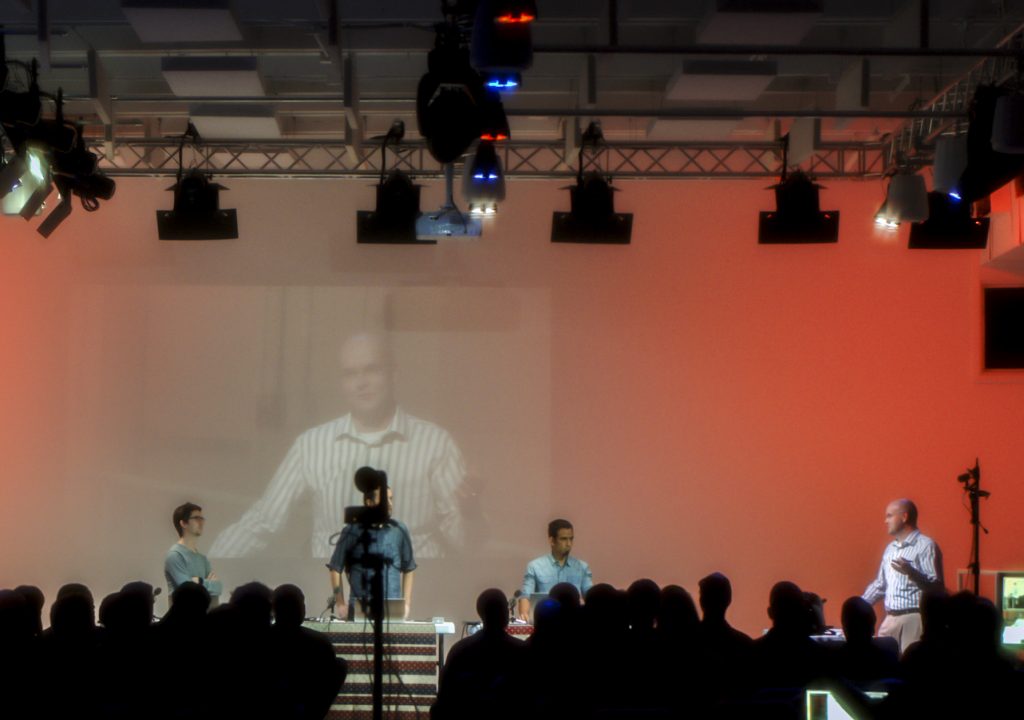Which NLE is the right one for you? The Nashville Film Guild took the matter to a Presidential style debate. See which one fits in the of a so-called “Green Party” candidate.
Which Non-Linear Editing system equals the best was put to a debate by the Nashville Film Guild. Up on stage were representatives of the big three editing systems used by professionals and freelancers nation-wide: Avid, Adobe, and Final Cut X. Yet, one dark horse “candidate” was left off the stage, Blackmagic’s DaVinci Resolve. New to mainstream editing DaVinci Resolve has been treated as an outlier, or like a “green party” candidate. They may not be on the main stage, but their ideas and voice definitely have a place in the world. We’ll dive into DaVinci Resolve’s editing in a minute. First, to the debate.
The Nashville Film Guild took their debate between Adobe CC, Avid Media Composer, and Apple’s Final Cut X live to the internet. If you missed the live broadcast you can see a “taped” version below. It is 2+ hours of tech talk, great questions from moderator Scott Simmons and the internet, and, well, debate hopefully giving you a better understanding of your NLE of choice, or, possibly, you’re shopping for something better. Then seeing each candidate defend their NLE might turn into a great opportunity to research each.
Now, let’s talk about DaVinci Resolve and it’s editing features. As a creative I’ve edited a handful of spots in Resolve. Is it enough to give you a holistic picture into the ins and outs of Resolve editing? Hell no, but my limited experience showed me enough to be hopeful for the future while being realistic about the present.
Resolve editing experience falls somewhere between Final Cut X and Adobe Premiere. What I like about Resolve the most is the price. Essentially, it’s a free editing platform if you go with the non-studio version. My personal favorite thing about editing in Resolve is the ability to work in one single program. As someone who round-trips most projects through a NLE and Resolve I look forward to only working in one program. It’s an easier workflow requiring less time in the end. What’s not to love about that process, right.
How does one get into editing on Resolve? I’ll quote Matt again, “We loved Resolve for color work…” which makes sense because color finishing is a big part of editing. While it’s fair to say all NLEs have some version of color finishing tied to their systems in some way. Do those programs color grade/correct as well as DaVinci Resolve? My opinion, and it’s only an opinion, is Resolve color grading is capable of more finessing than Avid’s Symphony and Adobe’s in Premiere color tools.
Yet, when I edit in Resolve I find some key features missing, and I’m not the only one. “Resolve has tremendous potential for the future and even though it’s missing a lot of features that editors coming from other platforms might need it’s still a very capable NLE. As far as the price / performance ratio goes, that really can’t be beat. But even more than that Blackmagic’s engineers seem to be listening very closely and improving it very quickly.” Scott Simmons of the EditBlog.
All of this sums up to one fact, which could be debatable, DaVinci Resolve is the editing equivalent to a Green Party candidate. There are points to be made about feasibiltiy and
Which brings me to DaVinci Resolve’s future. Will we see Blackmagic merge DaVinci Resolve and Fusion? Will we see DaVinci Resolve with a dedicated Fusion plugin so an editor can quickly shift gears from assembly-editing, special effects and compositing, back to Resolve to dive into an intensive color correction session? Will composited layers in Fusion be able to open up in Resolve so a colorist can color each individual layer separately and collectively? Or, will we see Fusion take lessons learned from Resolve? I have no idea.
To learn more about DaVinci Resolve go here.
Other sponsor of the Nashville Film Guild’s Great NLE Debate: Sony, ShutterStock, AbelCine, Blackhawk Cinema, and Studio 615

